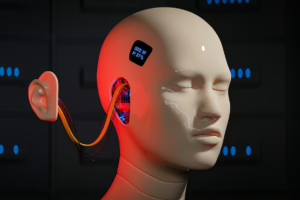AI Unboxed: What Does Artificial Intelligence Really Mean?
Introduction
Artificial Intelligence (AI) has become a buzzword in contemporary society, permeating various sectors from healthcare to finance, and even shaping our everyday interactions. It promises to enhance efficiency, streamline processes, and even perform tasks that typically require human intelligence. However, the term “artificial intelligence” often elicits a myriad of interpretations and misconceptions. This article seeks to demystify AI, examining its definition, implications, and the ethical considerations surrounding it.
Defining Artificial Intelligence
What is Artificial Intelligence?
AI is a branch of computer science aimed at creating machines capable of performing tasks that would typically require human intelligence. This includes problem-solving, understanding natural language, recognizing patterns, and making decisions. The term encompasses a variety of subfields, including:
- Machine Learning (ML): A subset of AI that focuses on the development of algorithms that allow computers to learn from and make predictions based on data.
- Natural Language Processing (NLP): This area deals with the interaction between computers and humans using natural language.
- Computer Vision: This subfield involves enabling machines to interpret and make decisions based on visual data.
- Robotics: A branch that integrates AI with physical machines to create robots capable of performing tasks in various environments.
Historical Context
The concept of machines capable of simulating human thought dates back to ancient mythology, but the formal study of AI began in the mid-20th century. Pioneers like Alan Turing and John McCarthy laid the groundwork for what would become a multifaceted discipline. In 1956, the Dartmouth Conference, organized by McCarthy, marked the birth of AI as a formal research domain.
The Mechanisms Behind AI
Algorithms and Data
At the core of AI is the algorithm, a set of rules or instructions for processing data. Machine learning relies heavily on large amounts of data to train these algorithms. For example, in supervised learning, algorithms learn from labeled datasets, while in unsupervised learning, they identify patterns without explicit guidance.
Neural Networks
Neural networks, inspired by the human brain, are essential for many advanced AI applications. They consist of interconnected nodes (neurons) that can process information in complex ways. Deep learning, a subset of ML, employs multiple layers of neural networks to analyze vast datasets, enabling breakthroughs in fields such as image and speech recognition.
Applications of AI
Healthcare
AI’s potential in healthcare is profound. From predictive analytics that forecast disease outbreaks to robotic surgery assistance and personalized medicine, AI technologies are revolutionizing patient care. For instance, IBM’s Watson Health utilizes AI to analyze medical literature and provide data-driven treatment recommendations.
Finance
In the financial services industry, AI is employed for risk assessment, fraud detection, and algorithmic trading. AI algorithms can process vast quantities of data more quickly and accurately than human analysts, making predictions about market trends based on real-time information.
Transportation
Autonomous vehicles represent one of the most talked-about applications of AI. Companies like Tesla and Waymo are developing vehicles that can navigate and operate without human intervention, relying on a combination of computer vision, radar, and Lidar technologies.
Customer Service
AI chatbots and virtual assistants are becoming increasingly prevalent in customer service. They can manage inquiries, troubleshoot problems, and facilitate transactions, enhancing user experience while reducing operational costs for businesses.
The Ethical Dimensions of AI
Bias and Fairness
One of the most pressing ethical issues in AI is the potential for bias. Algorithms trained on biased data can perpetuate and even amplify existing inequalities. For example, facial recognition technology has been criticized for its inaccuracies in identifying individuals from minority backgrounds.
Privacy Concerns
As AI systems collect vast amounts of personal data, privacy has become a significant concern. The collection, storage, and use of data must be carefully managed to prevent misuse and ensure compliance with regulations like the General Data Protection Regulation (GDPR).
Accountability
Determining accountability in AI-driven decisions poses another ethical dilemma. When an AI system makes a mistake—like diagnosing a patient incorrectly or miscalculating a financial risk—who is liable? Establishing accountability frameworks becomes crucial as AI continues to be integrated into critical systems.
The Future of AI: Opportunities and Challenges
Advancements in Technology
The future of AI promises to bring even more transformative changes. Technologies like quantum computing and advanced neural networks hold the potential to enhance AI capabilities exponentially.
Human-AI Collaboration
Rather than viewing AI as a replacement for human intelligence, many experts advocate for a collaborative approach. The integration of AI tools can enhance human capabilities, enabling workers to focus on more creative and strategic tasks.
Regulation and Governance
As AI continues to evolve, appropriate regulatory frameworks will be essential to ensure ethical use. Policymakers must establish guidelines that balance innovation with social responsibility.
Conclusion
AI is not merely a technological trend; it represents a paradigm shift in how we understand and interact with machines. While the potential benefits are immense, it is crucial to approach AI with a balanced perspective, understanding both its capabilities and limitations. As we unpack the complexities of AI, we must foster dialogue around its ethical implications, ensuring that this powerful technology serves humanity positively and equitably.
Modern Footnotes
- Bostrom, Nick. Superintelligence: Paths, Dangers, Strategies. Oxford University Press, 2014.
- Russell, Stuart, and Norvig, Peter. Artificial Intelligence: A Modern Approach. 3rd ed., Prentice Hall, 2009.
- Turing, Alan. “Computing Machinery and Intelligence.” Mind, vol. 59, no. 236, 1950, pp. 433-460.
- Dignum, Virginia. “Responsible Artificial Intelligence: Designing AI for Human Values.” AI & Society, vol. 34, no. 4, 2019, pp. 689-700.
- Ethical Issues in Artificial Intelligence. AI Now Institute, New York University, 2018.
- Chui, Martha, et al. “AI Adoption: The Next Frontier.” McKinsey Quarterly, 2021.
- Brynjolfsson, Erik, and McAffee, Andrew. The Second Machine Age: Work, Progress, and Prosperity in a Time of Brilliant Technologies. W. W. Norton & Company, 2016.
- Arrieta, Alejandro B., et al. “Explainable Artificial Intelligence (XAI): Concepts, Taxonomies, Opportunities, and Threats.” Information Fusion, vol. 58, 2020, pp. 82-115.
- Gans, Joshua S. The Disruption Dilemma. MIT Press, 2016.
- Binns, Reuben. “Fairness in Machine Learning: Lessons from Political Philosophy.” Proceedings of the 2018 Conference on Fairness, Accountability, and Transparency, 2018.
Note: This article outlines the complexities and implications of AI, aiming to spark further discussion and understanding of this evolving field. The references provided give readers a pathway to explore the subject further.


























Add Comment